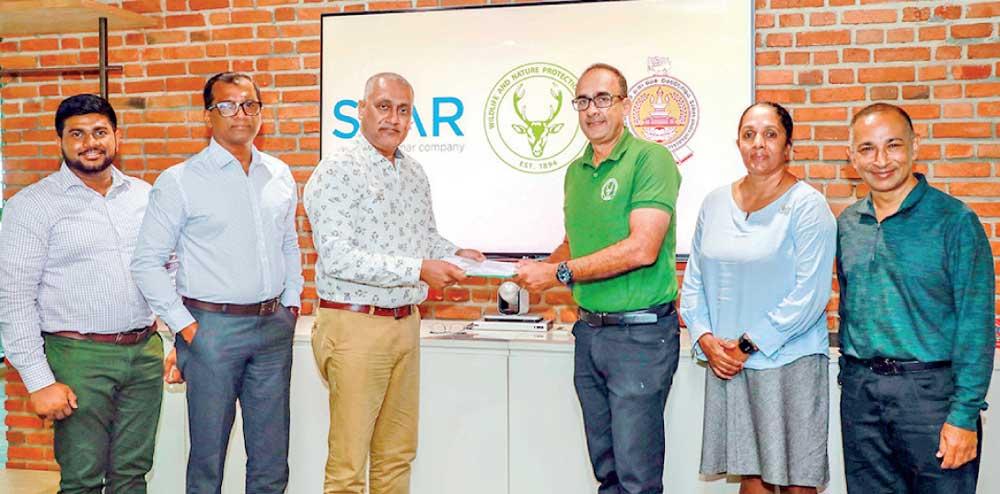13 Sep 2024 - {{hitsCtrl.values.hits}}

From left: Group Sustainability and Compliance Senior Manager Senura Dharmadasa, Executive VP Sampath Krishantha, Executive VP Chamath De Alwis, WNPS General Secretary Graham Marshall, University of Wayamba Senior Lecturer and National Mangrove Expert Committee and STRP of RAMSAR Chair Prof. Sevvandi Jayakody and WNPS Past President Sriyan de Silva Wijeyeratne
As part of its sustainability strategy, Star Garments Group (Star) has stepped up to restore the biodiversity around its factory operations and offices, by committing to restore half of its physical footprint.
Star cemented its commitment towards biodiversity restoration on World Seagrass Day in 2023 with its pledge to regenerate mangroves across three hectares, located between Sri Lanka’s major towns of Chilaw and Puttalam, the Anawilundawa Ramsar Wetland Sanctuary, which was barren due to shrimp farming.
This initiative marks Star’s journey towards biodiversity restoration, carried out in collaboration with the Wildlife Conservation Department, Forest Conservation Department, Sri Lankan Navy, Wildlife and Nature Protection Society (WNPS) and University of Wayamba, to accelerate the Natural Regeneration of Mangroves (ANRM) using accepted scientific principles. The project also won the UN Decade of World Restoration Flagship Award for Sri Lanka in 2024.
During the initial stage of the project, fish bone-shaped channels were prepared based on the contour maps developed by the Sri Lanka Navy to bring water to this barren land. The team at Star initiated the second phase of the project by planting 500 mangrove seedlings.
Currently, Sri Lanka’s mangrove cover, estimated to be 15-000 19,000 hectares, is a mere ~0.3 percent of the country’s total landmass. This level indicates a critically low level of coverage that puts the island at risk from the impact of climate change and natural disasters such as storm surges and tsunamis. Mangroves are an integral part of the country’s forestry and constitute about two percent of Sri Lanka’s total forest cover and very much a part of the fast-dwindling 17 percent of primary forests.
25 Nov 2024 46 minute ago
25 Nov 2024 2 hours ago
25 Nov 2024 2 hours ago
25 Nov 2024 3 hours ago
25 Nov 2024 3 hours ago